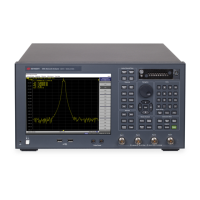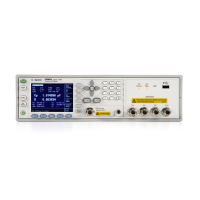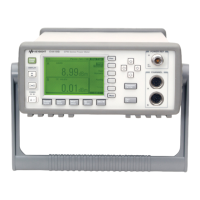E5071C
1028
Scalar-Mixer Calibration
• Overview
• Measurement of Scalar-Mixer Calibration Data
Other topics about Performing Calibration
Overview
The E5071C's frequency offset function allows you to measure any device
that has different input and output frequencies. To correct such
measurements, you must determine the transmission frequency
characteristics at different frequencies.
Scalar-mixer calibration is a method to calculate the transmission
frequency characteristics at different frequencies by using a power meter.
Measurement of Scalar-Mixer Calibration Data
Setting Frequency Offset Function
You can use the following command to enable the frequency offset function
before starting a measurement of scalar-mixer calibration data.
:SENS{1-36}:OFFS
• To use scalar-mixer calibration, the frequency offset function
must be enabled.
Selecting Calibration Port and Type
You can use the following commands to set the port on which a
measurement of scalar-mixer calibration data is implemented and the type
of calibration.
• :SENS{1-36}:CORR:OFFS:COLL:METH:SMIX2
• :SENS{1-36}:CORR:OFFS:COLL:METH:SOLT1
"SMIX2" will set a scalar-mixer calibration for 2-port forward, reverse and
both directions. "SOLT1" will set 1-port calibration.
• The two ports specified by "SMIX2" must be different from each
other.
The setting of forward, reverse and both directions is not dependent on the
order of the two specified ports but determined by specifying an
appropriate command for calibration data measurement, such as
:SENS{1-36}:CORR:OFFS:COLL:OPEN
Measuring the Calibration Data
You can use the following command to measure the scalar-mixer
calibration data.

